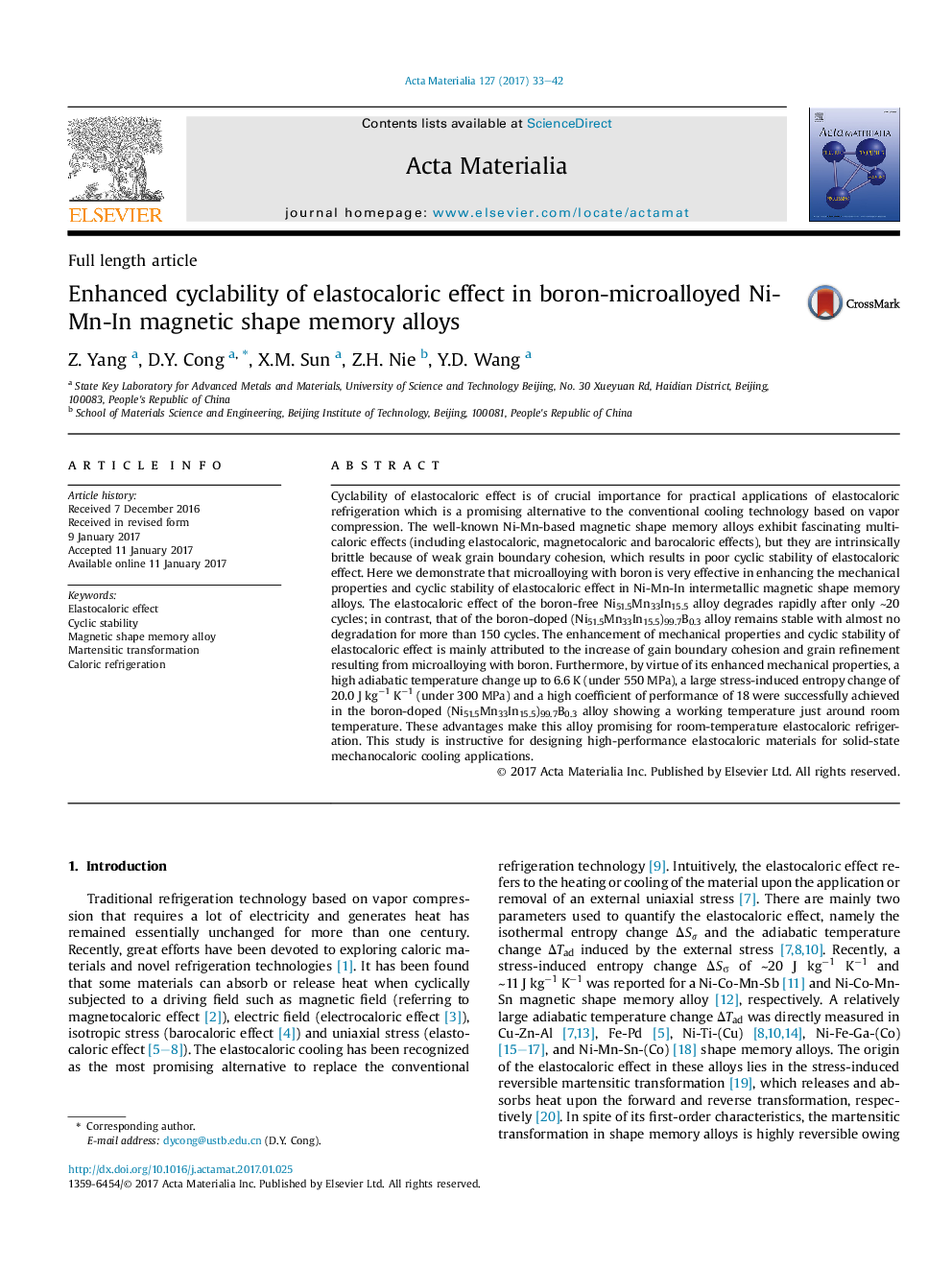| Article ID | Journal | Published Year | Pages | File Type |
|---|---|---|---|---|
| 5436308 | Acta Materialia | 2017 | 10 Pages |
Cyclability of elastocaloric effect is of crucial importance for practical applications of elastocaloric refrigeration which is a promising alternative to the conventional cooling technology based on vapor compression. The well-known Ni-Mn-based magnetic shape memory alloys exhibit fascinating multicaloric effects (including elastocaloric, magnetocaloric and barocaloric effects), but they are intrinsically brittle because of weak grain boundary cohesion, which results in poor cyclic stability of elastocaloric effect. Here we demonstrate that microalloying with boron is very effective in enhancing the mechanical properties and cyclic stability of elastocaloric effect in Ni-Mn-In intermetallic magnetic shape memory alloys. The elastocaloric effect of the boron-free Ni51.5Mn33In15.5 alloy degrades rapidly after only â¼20 cycles; in contrast, that of the boron-doped (Ni51.5Mn33In15.5)99.7B0.3 alloy remains stable with almost no degradation for more than 150 cycles. The enhancement of mechanical properties and cyclic stability of elastocaloric effect is mainly attributed to the increase of gain boundary cohesion and grain refinement resulting from microalloying with boron. Furthermore, by virtue of its enhanced mechanical properties, a high adiabatic temperature change up to 6.6Â K (under 550Â MPa), a large stress-induced entropy change of 20.0Â JÂ kgâ1Â Kâ1 (under 300Â MPa) and a high coefficient of performance of 18 were successfully achieved in the boron-doped (Ni51.5Mn33In15.5)99.7B0.3 alloy showing a working temperature just around room temperature. These advantages make this alloy promising for room-temperature elastocaloric refrigeration. This study is instructive for designing high-performance elastocaloric materials for solid-state mechanocaloric cooling applications.
Graphical abstractDownload high-res image (608KB)Download full-size image
